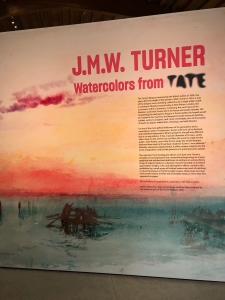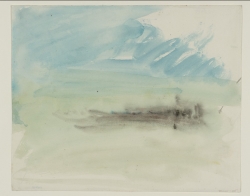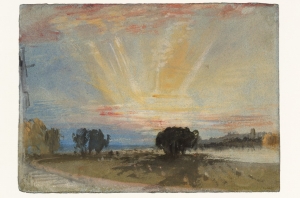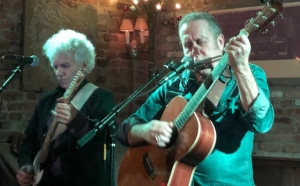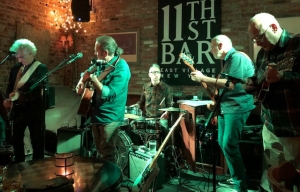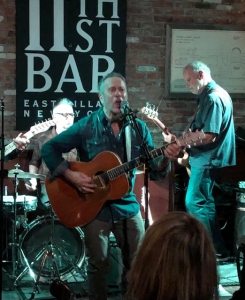“J.M.W. Turner: The Majesty of Vision” by Kyle Gallup
“J.M.W. Turner: Watercolors from Tate at the Mystic Seaport Museum”
Painting as an Aide-Memoire
Stormy seas as atmospheric notations; sheer, floating sunsets; a bright-white moonrise over a glassy body of water; imaginary, architectural views of early nineteenth-century buildings; and a pastoral River Thames on a cloudy summer day. These paintings comprise five of the ninety-two watercolors, four oil paintings, and one of Joseph Mallord William Turner’s last sketchbooks that are on view in a current exhibition, “J.M.W. Turner: Watercolors from Tate,” at the Mystic Seaport Museum, Mystic, Connecticut, through February 23, 2020.
The watercolors are thoughtfully selected from the Turner Bequest, which contains 30,000 works on paper left to Great Britain and housed by the Tate since 1856, five years after the artist’s death. The show is curated by Dr. David Blayney Brown,Tate’s Manton Senior Curator of Nineteenth Century British Art, and organized chronologically with informative title cards that provide important context for these visionary works within the larger arc of Turner’s long public career.
As you enter the gallery, the first dark, silvery watercolors were done when Turner (1775-1851) was in his early twenties and one, “View in the Avon Gorge,” was painted when Turner was only a precocious sixteen-year-old. In it we see a gorge and river view with an overhanging tree, rock cliffs in powdery blues, and silvery-green leafed trees, delicately painted and already masterfully detailed. These early works, along with the thousands of others on paper, filled his residence after his death. The majority of the bequest was part of Turner’s private collection, made for himself, and not intended for public viewing.
Watercolors—a fragile, fugitive medium—are seldom displayed in public. They are loaned, transported, and exhibited even less often, so it’s very special to have the works on display in the United States at all, and an opportunity to see Turner in an intimate light, not as Royal Academician and renowned artist of dramatic oil paintings, but as a far-seeing, romantic, and hard working painter.
The exhibition has many watercolors with atmospheric notes; dashes and washes of buoyant color; sight and thought as one. I can imagine that Turner used these simple landscapes for reference, and as aide-mémoire when painting other works.
“A Wreck Possibly Related to ‘Longships Lighthouse, Land’s End’ (1834),” “Sunset Across from the Terrace of Petworth House (1827),” and “Coastal Terrain (1830-45),” give the viewer a sense of the weather conditions, movement, and hour of the day. They are Turner’s visual shorthand—pared down, yet still encompassing a larger sense of what Turner was looking at and thinking about at particular moments in time.
For the full essay with all illustrations, please click here.

“A Wreck, Possibly Related to ‘Longships Lighthouse, Land’s End (1834)”. Turner Bequest 1856 © Tate 2019

